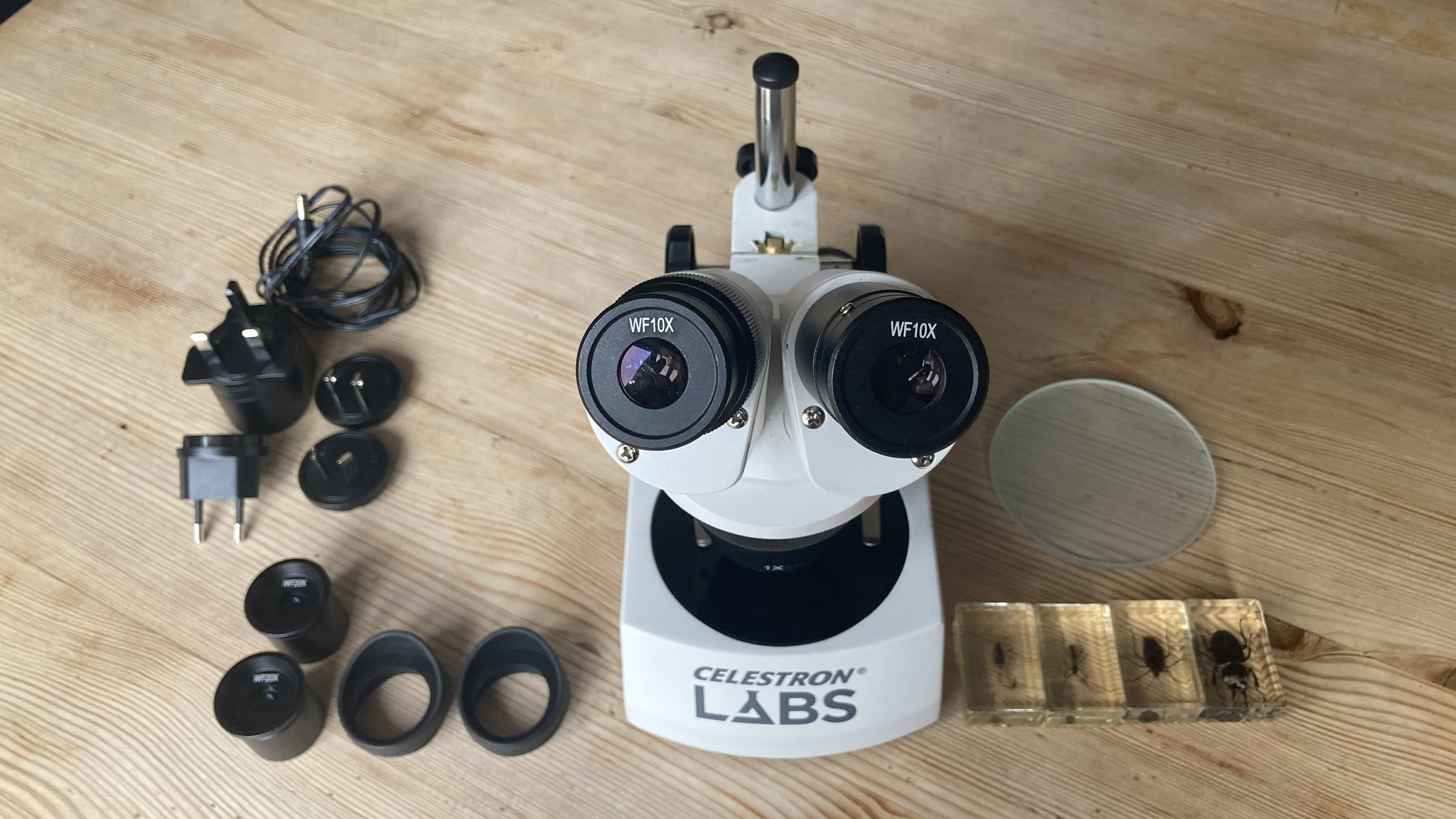Live Science Verdict
Constructed from sturdy materials, with interchangeable stage plates, the Celestron Labs S10-60 has a professional, robust feel, provides a wide range of low-powered, clear, 3D images and is a useful teaching tool.
Pros
- +
Interchangeable stage plates
- +
Upper and lower lights
- +
Robust, glass and metal construction
- +
Gives clear, detailed images
Cons
- -
Topples when head is rotated by 180 degrees
- -
Light sources are not adjustable
- -
Fiddly to set up
Why you can trust Live Science
Celestron has produced a decent stereo microscope with its Celestron Labs S10-60 model. Professionals agreed that the three-dimensional images produced by this microscope were fantastic, due to its high-quality optics and construction materials, a range of lighting options and interchangeable stage plates — in spite of some fiddly set-up requirements.
Head: Binocular 360-degree rotating head with 45-degree incline
Eyepieces: Two wide-field 10X, two wide-field 20X
Objectives: 1X and 3X
Stage: Interchangeable stage plates with clips
Light source: Tungsten (top), halogen (bottom)
Condenser: None
Focusing: Coarse focusing only — extra reach via the pillar knob
Extras: Two rubber eyecups, four resin-mounted insect specimens, opaque stage plate, translucent stage plate, universal AC adapter, International plug adapters
Add-ons: Celestron includes a range of prepared slides and insect specimens
Using low magnifications, a wider field of view is achieved and more of the specimen is observed. The lighting options also enabled both translucent and solid objects to be observed. Pupils found the Celestron Labs S10-60 easy to learn to use, could soon operate it independently, loved the three-dimensional viewing and enjoyed having the eyecups to block out unnecessary light.
We all agreed that this model enhanced our microscopy investigations and was a great teaching tool. We would recommend the Celestron Labs S10-60 stereo microscope for school or home purposes, though it's perhaps best suited to those with a little microscopy experience.
Design
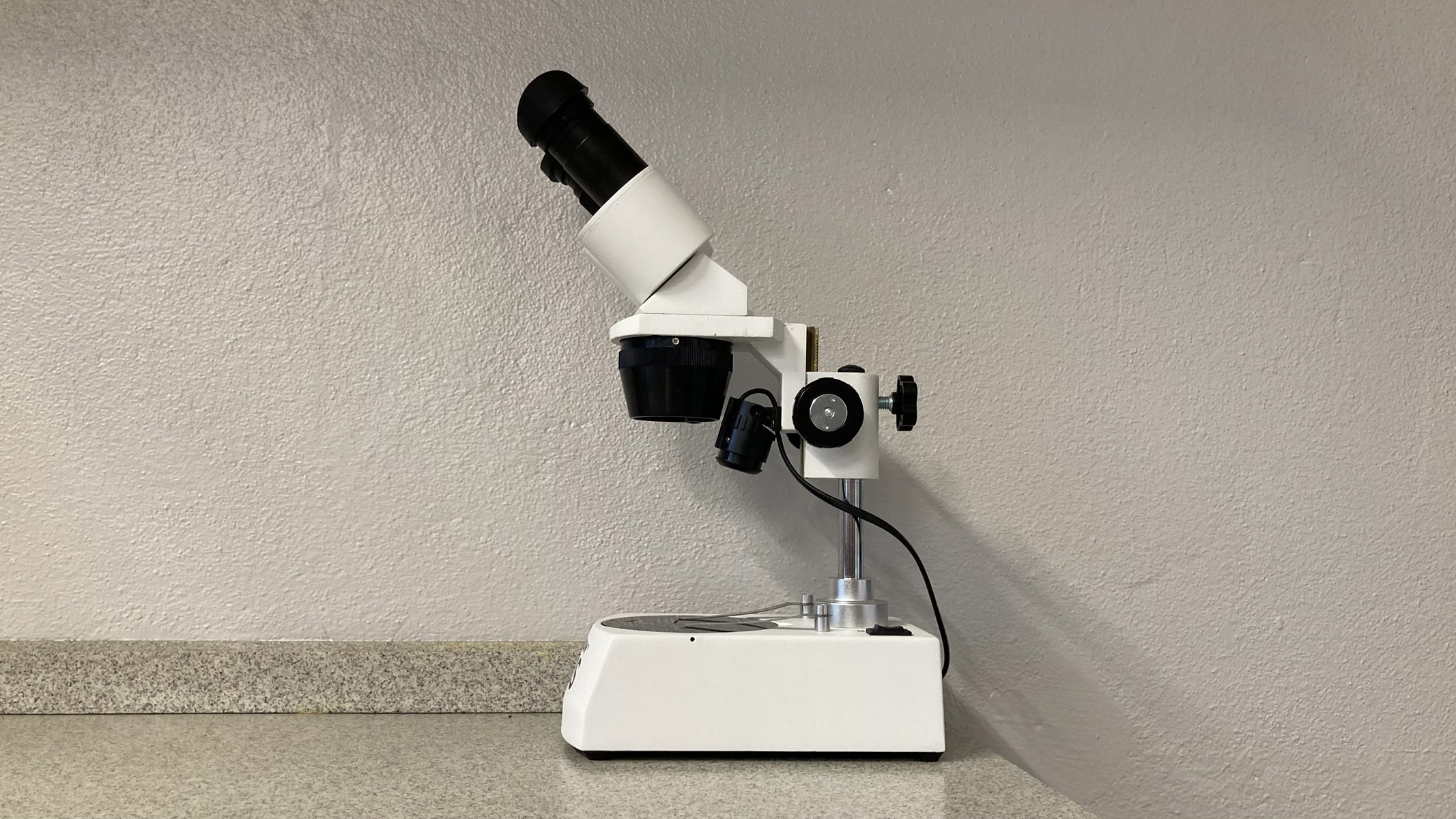
- Good value for money
- Can be used to view solid objects in three dimensions
- Extras give a more professional feel
The Celestron Labs S10-60 stereo microscope has been designed with two body tubes, allowing the light to travel up through two separate optical pathways from their respective objective to eyepiece lenses. Each divergent optical path reaches its eye at a different angle. Thus, a distinct image is seen in each eye and the object is observed in three dimensions.
Moreover, as the Celestron Labs S10-60 has a choice of lights, both thin specimens and solid objects can be examined. For thin samples, such as cell slides, the lower light source shines light up through the slides and tissue, before continuing up its dual optical pathways. When examining solid objects, the top light source reflects from the surface of the object and is then directed to each eye independently. We were delighted to discover that we could use both light sources simultaneously. It is just a shame that each light’s output is not variable.
Pleasingly, a couple of the Celestron Labs S10-60’s design features set it apart from other models of a similar price: the rubber eyecups and the interchangeable stage plates were highly useful and added to this microscope’s professional feel. The rubber eyecups were comfortable to use, easy to install and reduced the amount of light pollution entering the eyes. The Celestron Labs S10-60 also came with a translucent stage plate which softened the lower LED, while the opaque plate had a black side and a white one for enabling optimum specimen-background contrast. Without fixings, each stage plate could be removed and replaced within seconds.
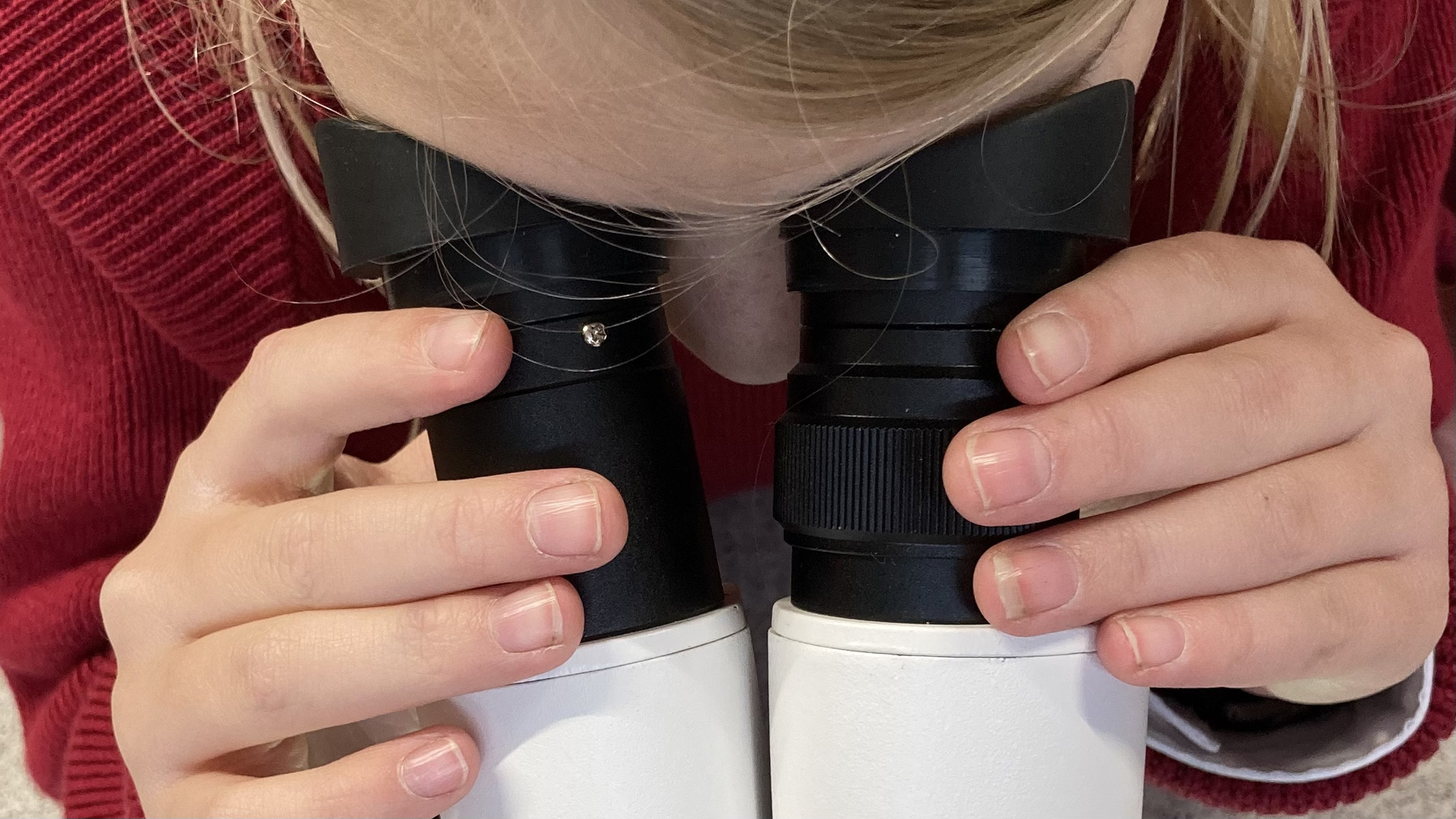
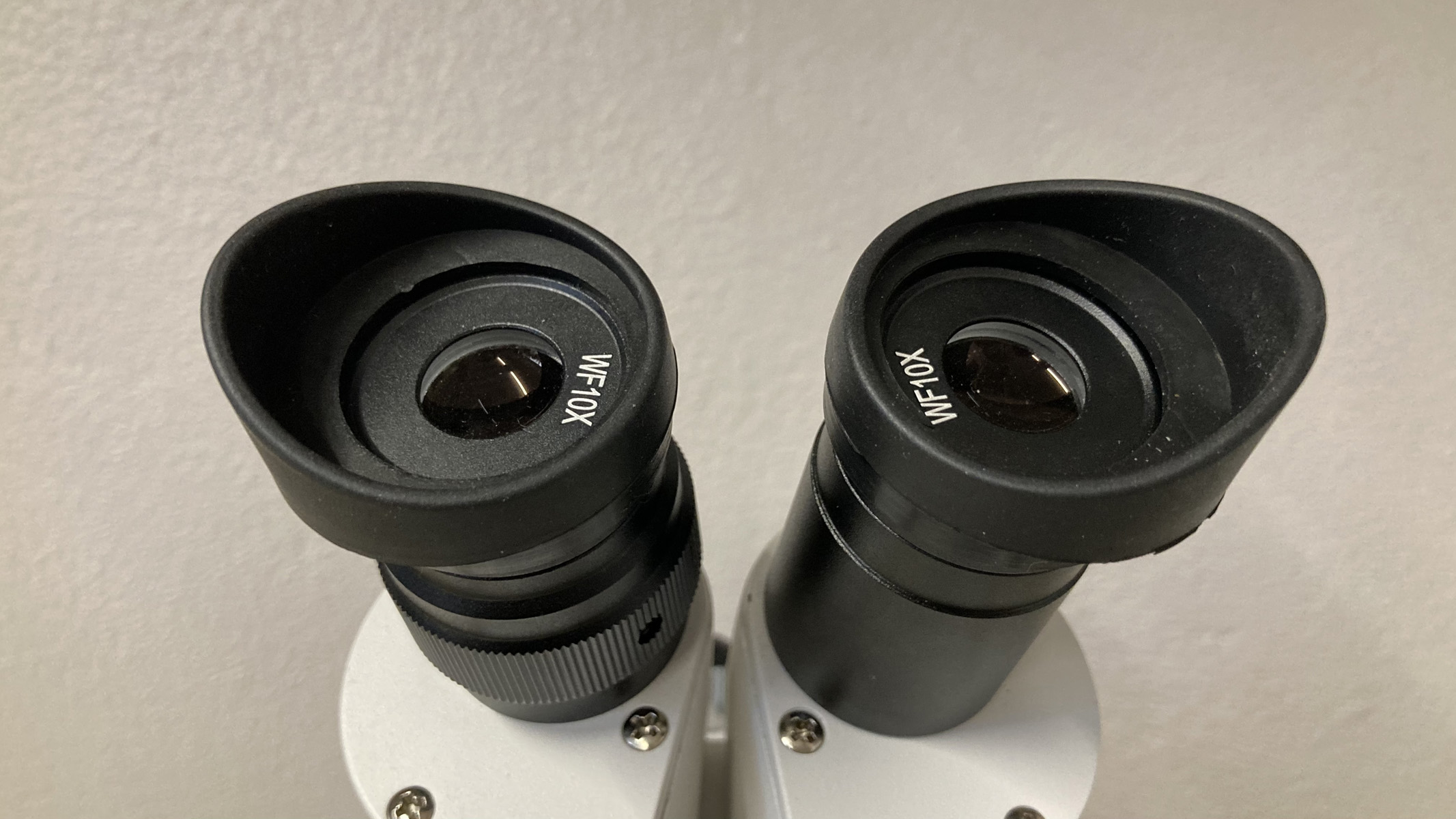
Unfortunately, the Celestron Labs S10-60 does also have a few design flaws. One useful upgrade could be to add a battery function to enable portability. We would also prefer it if we could exchange eyepiece lenses without having to use a screwdriver. Another improvement would be to make the clips from a slightly more rigid metal — one of ours bent out of shape almost immediately.
Get the world’s most fascinating discoveries delivered straight to your inbox.
Also, structurally, the base needs more mass. This microscope is marketed as having a 360-degree rotatable head but, while this is technically true, in practice, the shift in the center of gravity, with the head in the 180-degree position, means that the microscope topples over. Hence, its useability is much reduced. Additionally, when lowering the head, the lower light makes contact with the stage plate; extra care is needed to prevent damage.
Overall, we felt that the Celestron Labs S10-60 stereo microscope was designed with a proficient user in mind. This microscope had an air of sophistication about it, in terms of the sturdy glass and metals that it was constructed from, coupled with the well-thought-out “nice touches” that would be noticeable to an operator with some experience.
Consequently, the range of functions that are possible with the Celestron Labs S10-60, alongside a few design blunders, mean it would be complicated for a complete beginner to fathom. That said, the professional feel of the quality materials and bundled extras did leave us feeling that the Celestron Labs S10-60 was good value for money.
Performance
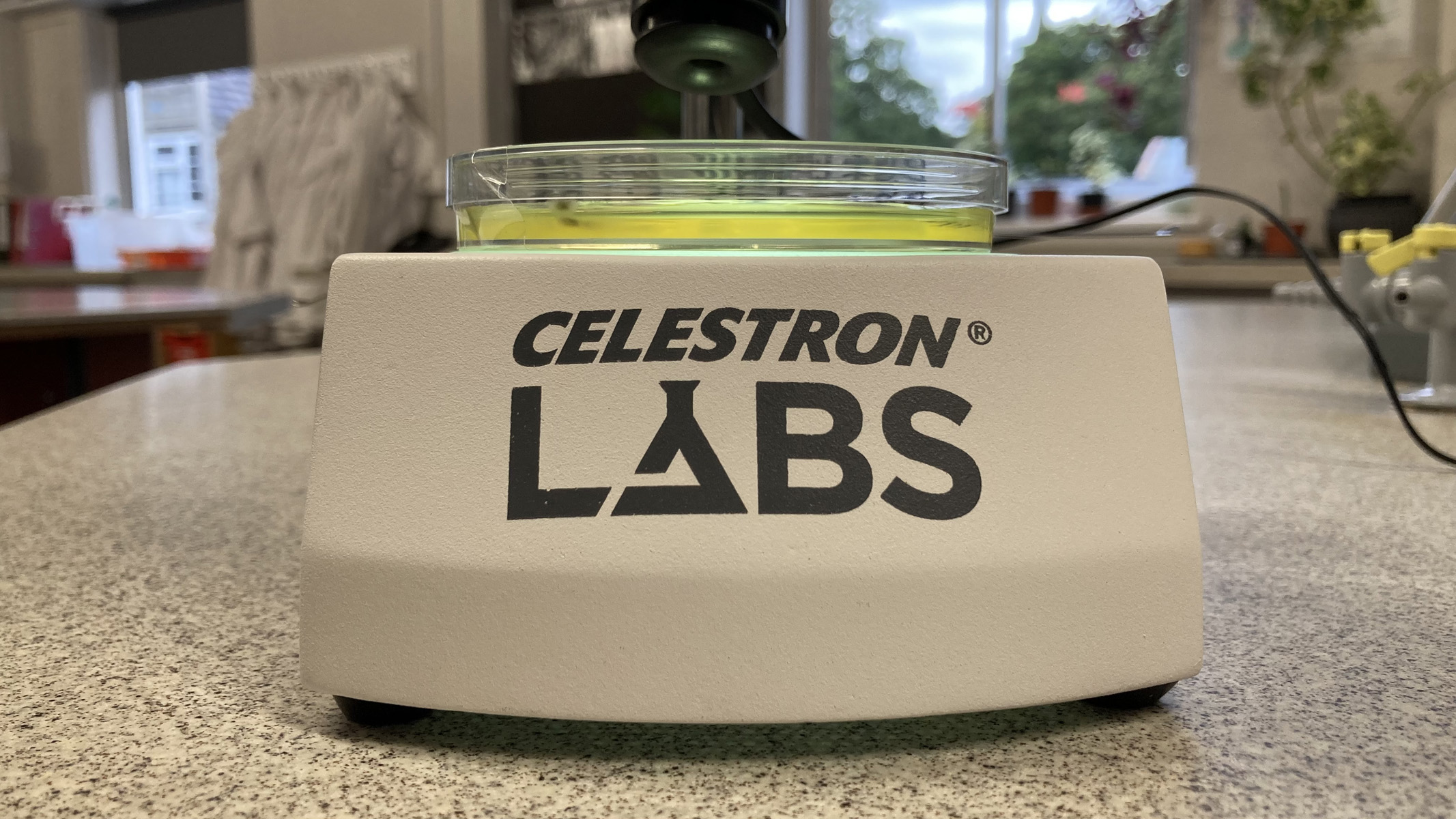
- Produces clear images
- 3D and solid object viewing
- Good range of low magnification
The Celestron S10-60 stereo microscope performed brilliantly, within its capabilities. We found it fit for the purpose of viewing solid and three-dimensional objects at low magnifications, and were impressed with the quality of images we obtained with it.
The benefit of the low magnification of the Celestron Labs S10-60 is that it has a wide field of view, which is necessary for viewing more of your specimen. For example, small shells, coins and insects could be examined, as whole objects, at 10X magnification. The drawback is that the same wide field of view and low magnification result in reduced resolution; the amount of detail you can see.
To quickly and easily increase resolution, the head can be rotated to increase the magnification to 30X. It is possible to increase the magnification further, to 60X, but this is more complicated and involves a time-consuming eyepiece lens switch. Unfortunately, the low magnification and resolution of the Celestron Labs S10-60 mean it does not perform brilliantly as a tool for cell microscopy.
Unarguably, the Celestron Labs S10-60 stereo microscope’s forte is three-dimensional viewing. The superimposed dual images created amazingly lifelike images of a range of invertebrates. In addition to observing the surface textures of leg hairs and antennae, discerning the angles and positions of each protuberance gave depth and realism to the resin-mounted creatures.

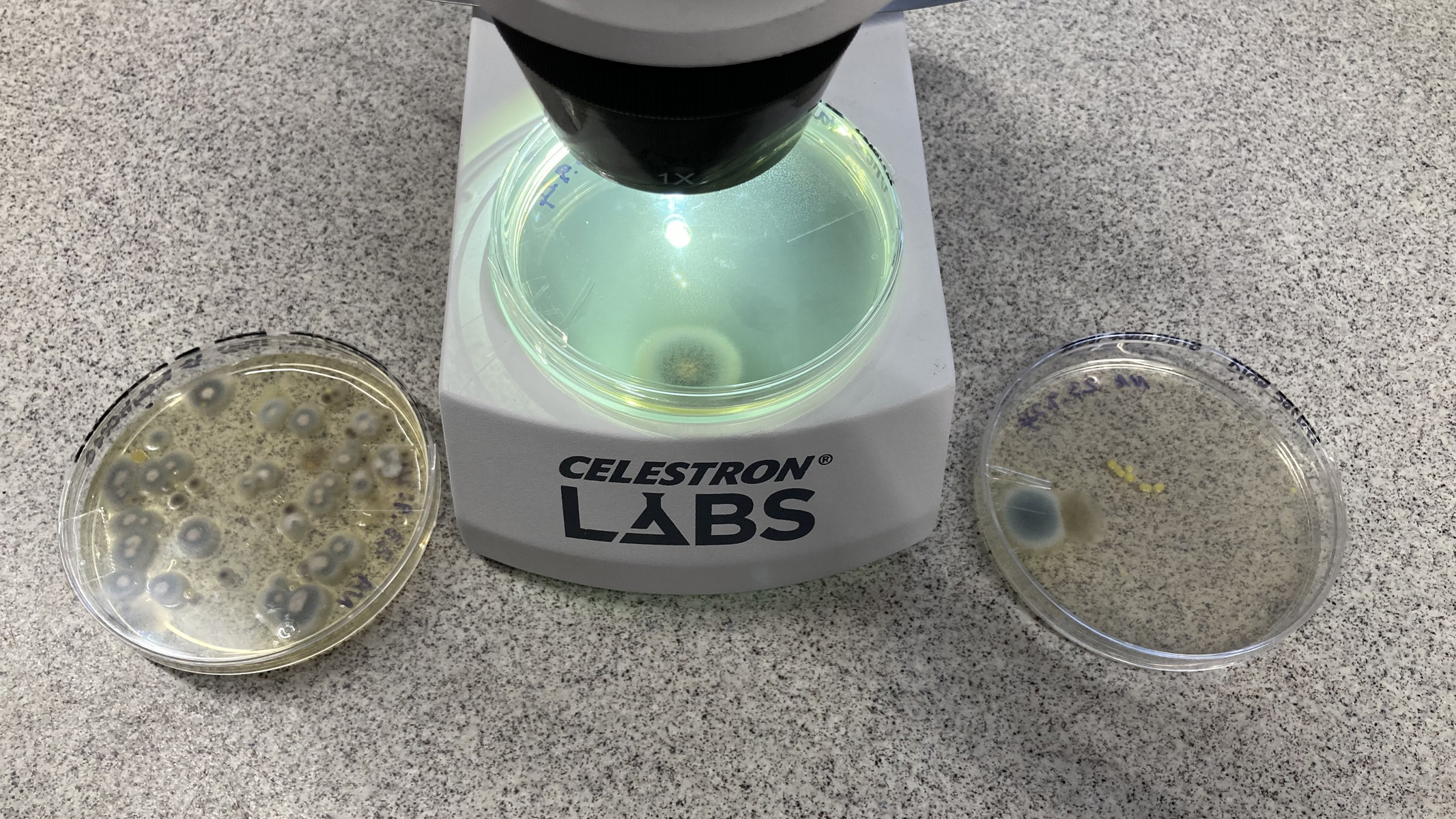
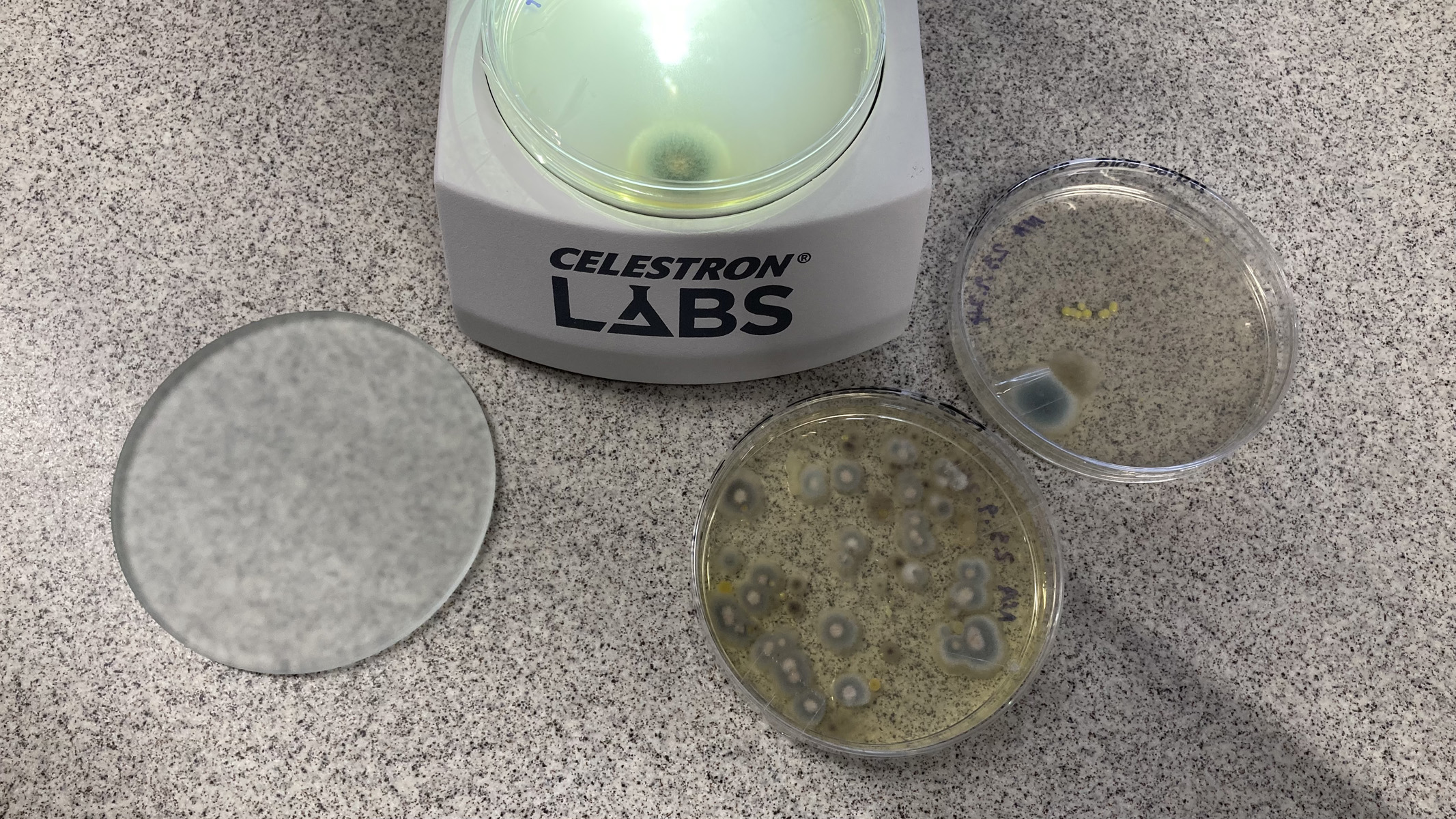
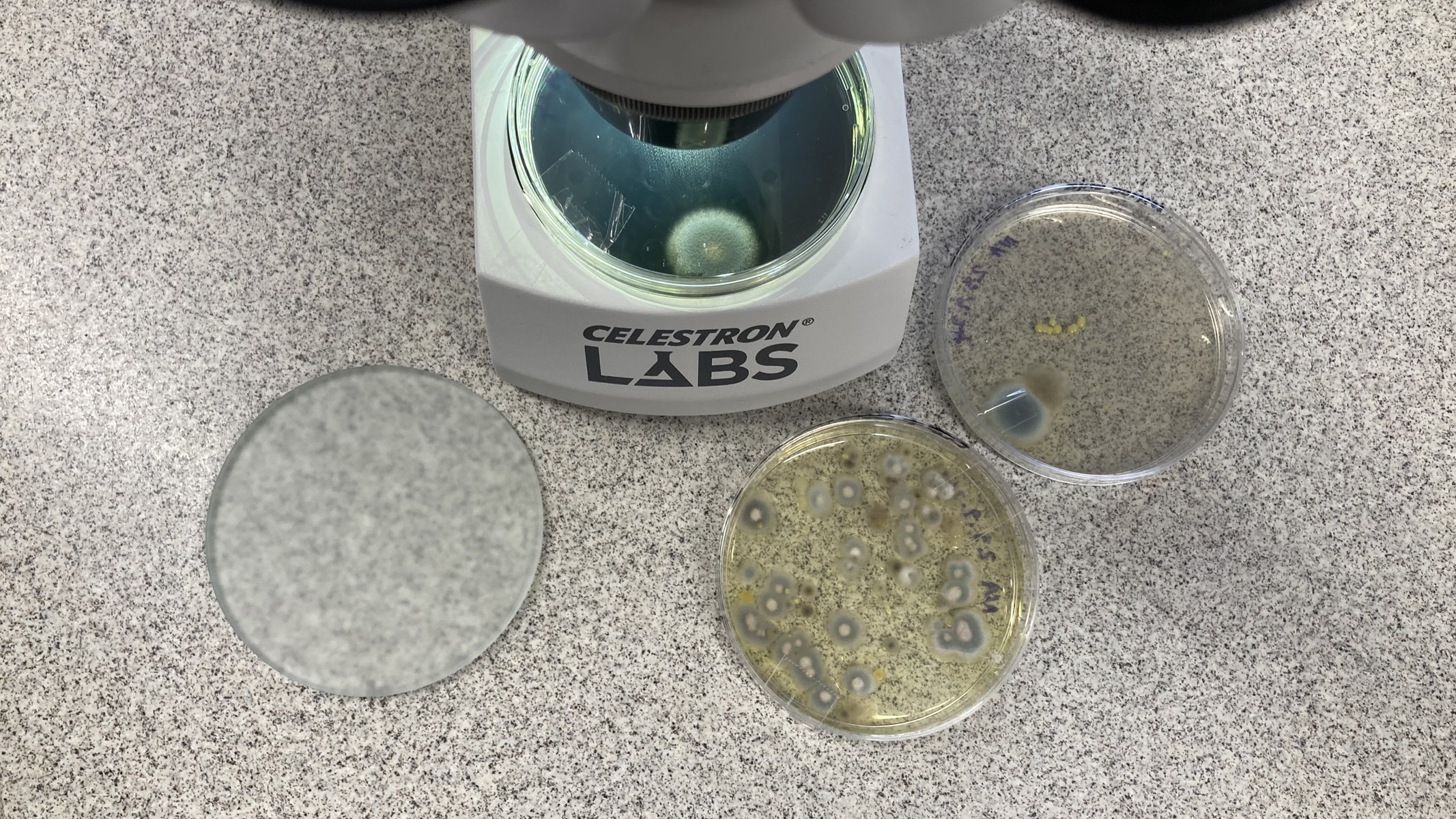
The Celestron Labs S10-60, with its three-dimensional capabilities, also performed fantastically when inspecting bacterial colonies. One pupil identified a glistening, raised colony that had a crateriform structure. Others found the strand-like texture of the filamentous and rhizoid colonies fascinating and disgusting in equal measures. The interchangeable stage plates enhanced the imagery, as the different colored bacteria needed different colored backgrounds to boost contrast. Furthermore, the large working distance of the Celestron Labs S10-60 enabled pupils to scrutinize the surface textures of a variety of solid objects, from coins to an avocado.
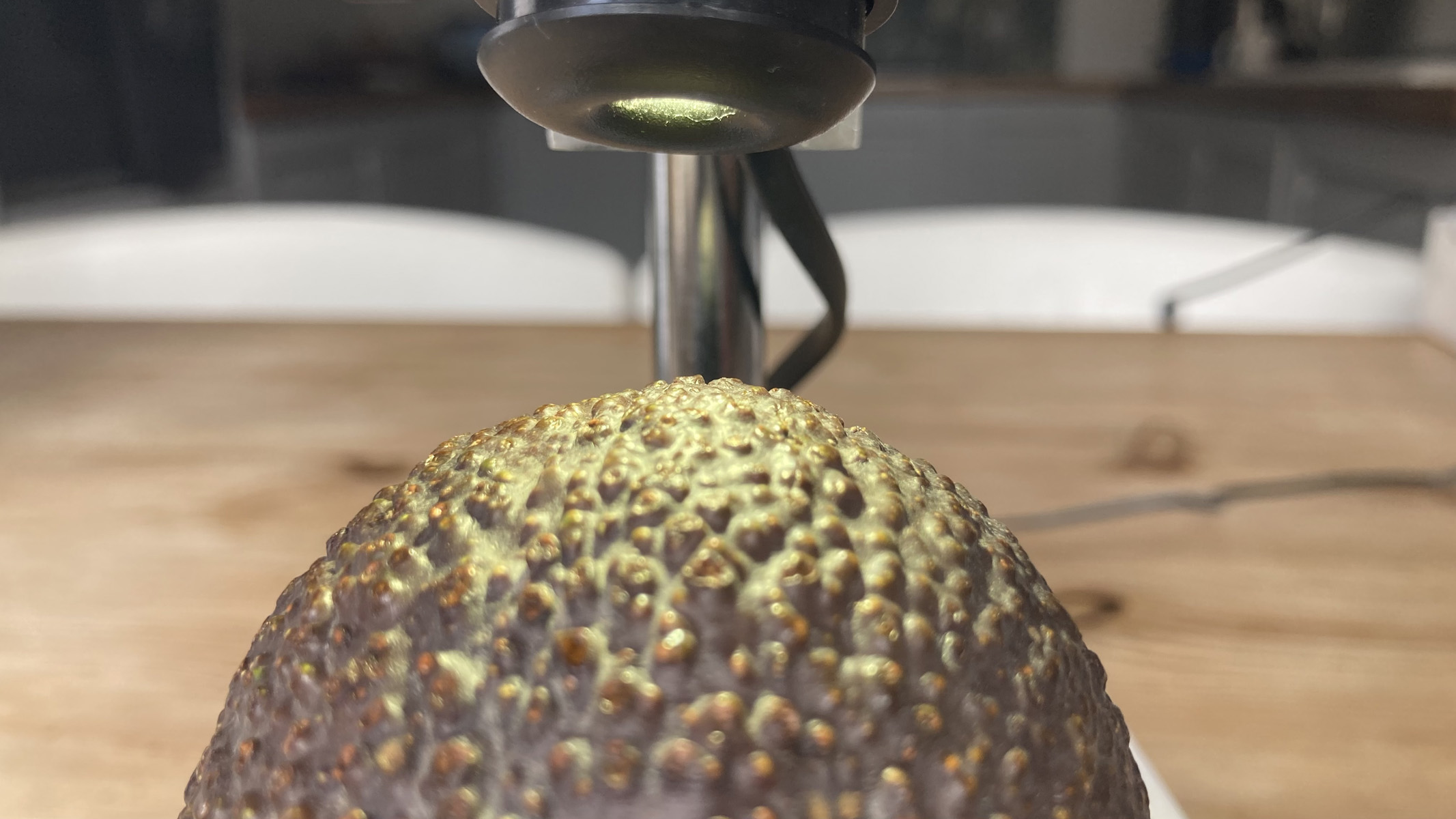
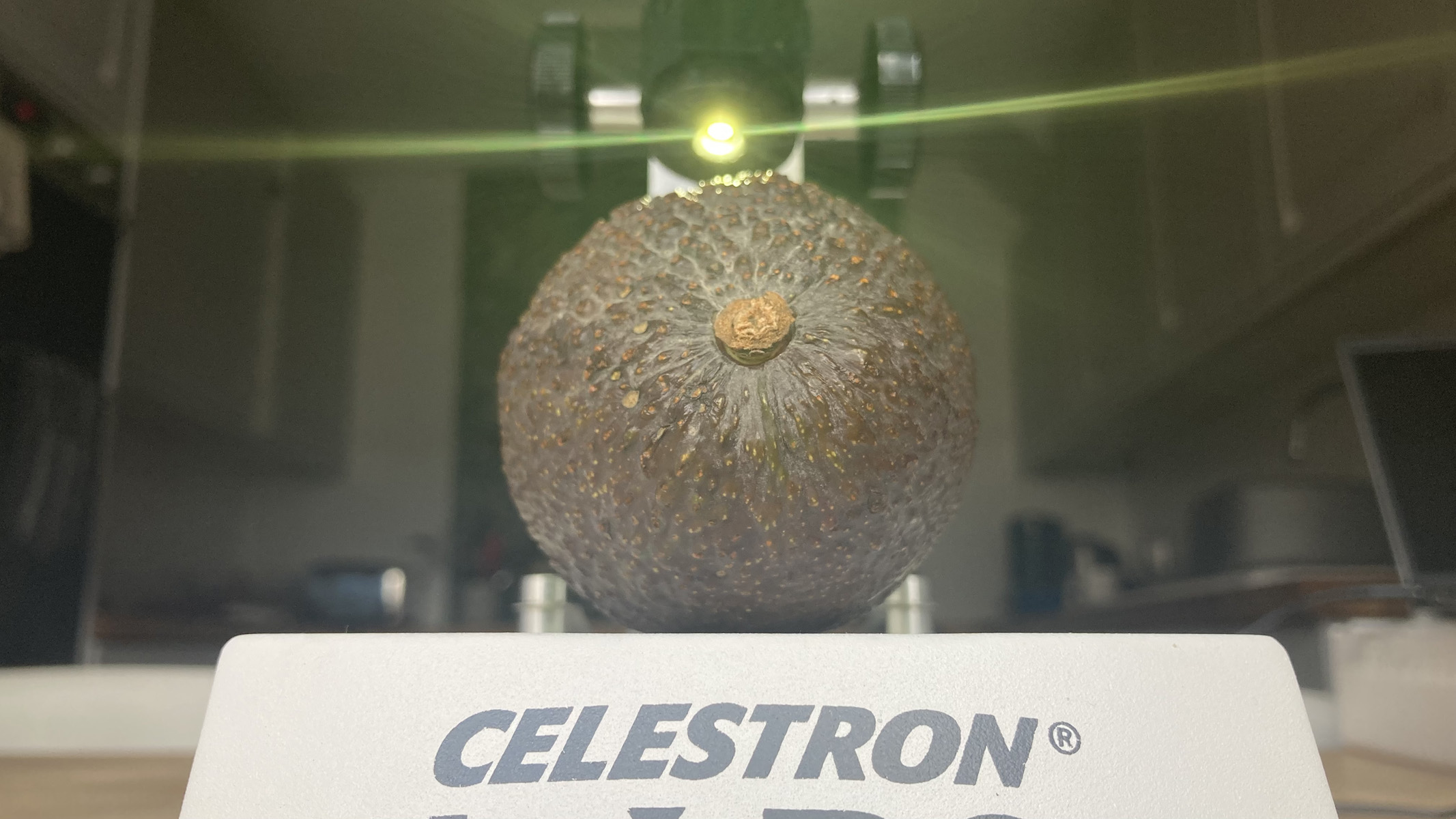
Interestingly, this set of pupils had never used a stereo microscope before. Yet, after a short demonstration of how to set the eyepieces to the correct interpupillary distance — looking for a complete circle with one eye and then directing the circle from the other eye, towards the first, until they are overlapped as a single circle — pupils were soon obtaining clear images quickly and easily. We were impressed with the clarity of the images, obtained in part by the high quality glass optics. Visual clarity was also enhanced when the eyecups were in use because light interference was minimized.
We suggest that the performance of the Celestron S10-60 Deluxe stereo microscope could be improved by installing adjustable illumination, and by resolving the toppling issue when the head is in the 180-degree position. Other than that, we were impressed by the performance of this useful and economic stereo microscope.
Functionality
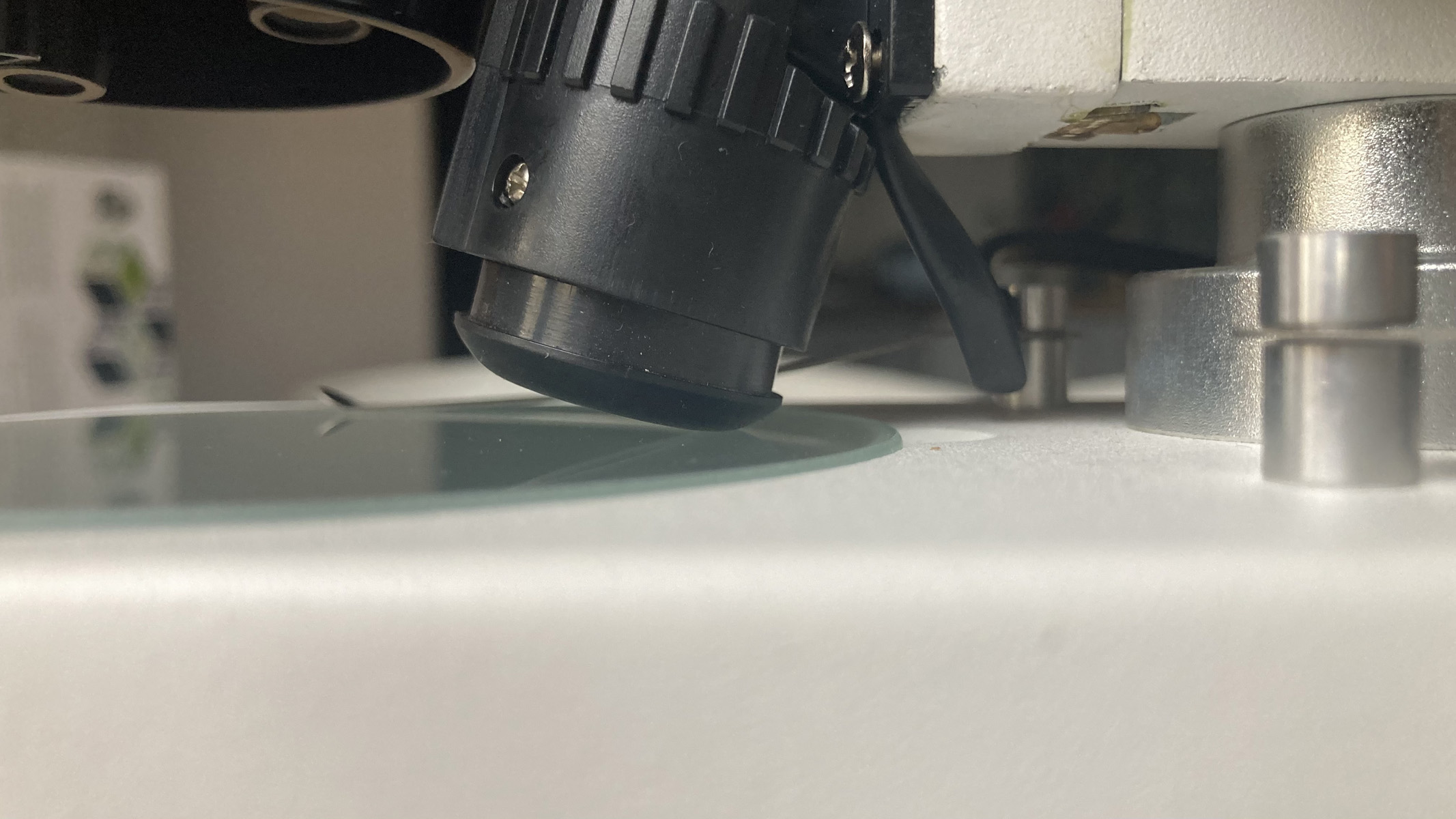
- Top light enables viewing of solid objects
- Choice of stage plates enables optimum viewing contrast
- Large stage to objective lens distance
Generally, pupils rated the Celestron Labs S10-60 stereo microscope’s functionality very highly. All were hugely enthusiastic about being able to see their specimens in three dimensions. After set-up and a brief demonstration, each pupil adjusted the binocular tube spacing for themselves and could competently share viewing without teacher assistance.
Once given the freedom to investigate, pupils confidently and enthusiastically exchanged specimens, light sources, stage plates and objective lenses completely independently. Specific positive feedback was that pupils liked how the eyecups prevented them from seeing their own eyelashes. They also said it was easy to use and were impressed with how clear the images looked.
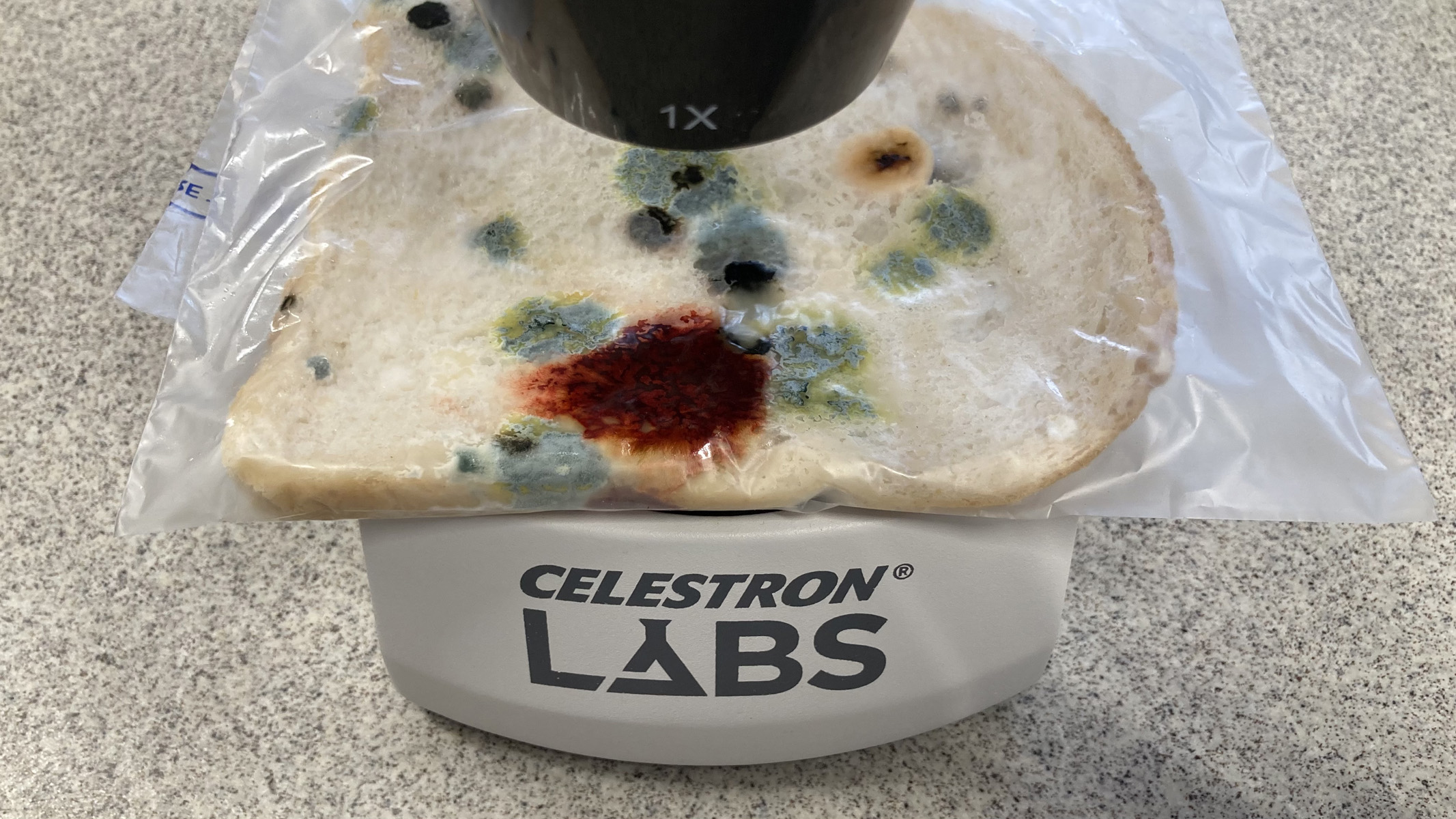
While testing the Celestron Labs S10-60 stereo microscope, as professionals, we noticed that its functionality sits in two opposing camps. If we merely consider the outcome — viewing clear, well-defined solid objects in three dimensions — then the Celestron Labs S10-60 is excellent and certainly delivers. The high quality optics provide sharp images, the eyecups reduce light pollution and improve clarity, and the interchangeable stage plates allow a fantastic range of images to be seen. The black, white or translucent background choices, added to the selection of top, bottom or dual lighting, were hugely important for achieving optimum specimen production. We were all impressed with the high quality images that the Celestron Labs S10-60 produced.
However, the awkward mechanisms and design issues left us frustrated that the huge potential of this stereo microscope is not being realized without an unreasonable amount of fiddling. As previously mentioned, the toppling which occurs at the 180-degree position is not only annoying but actually reduces functionality, as it cannot be used as a 360-degree viewing tool. This could easily be remedied by installing a firmer, heavier, plate at the bottom — the current one is very flimsy.
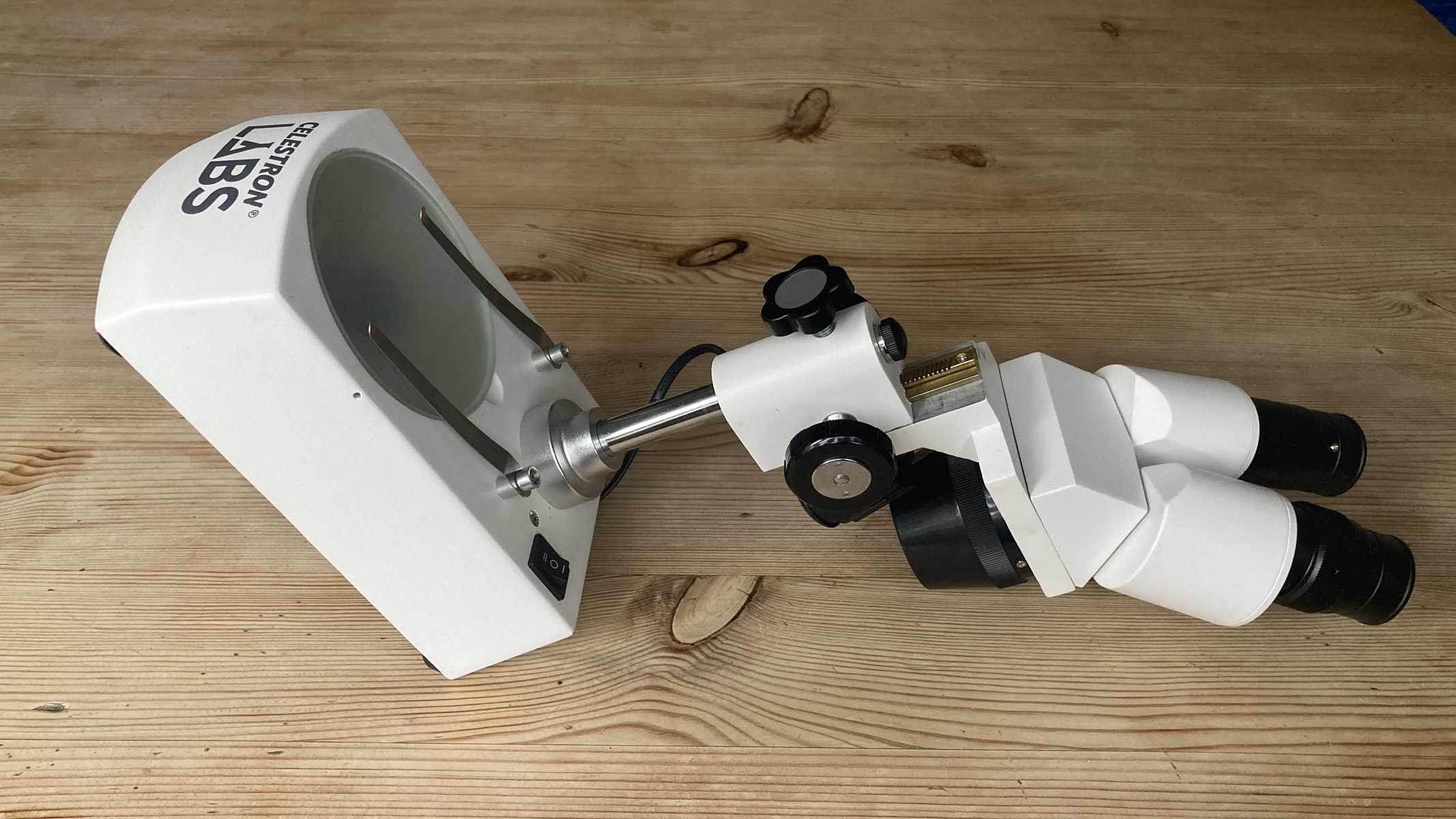
Furthermore, having to use a screwdriver to change lenses was also vexing; many similar microscopes have lenses that slot in and out seamlessly and are easier to use. In our opinion, the screw-in eyepieces are unnecessary as the equipment does not have batteries, so will not need to be turned upside down at any time. At the very least, a tiny screwdriver should be included.
A final functionality peeve is with the manual head adjustment that is necessary to achieve a viable working distance. The focusing knobs raise and lower the objective lens to allow planes at varied heights to be brought into focus, however, the upper height reached is not enough to be able to view the invertebrate specimens supplied with the Celestron Labs S10-60. Therefore, a nut needs to be loosened and the head raised manually. This increases the working distance but the focusing range stays the same. We propose that functionality would be improved if the working distance could be achieved with the focusing knobs alone.
In summary, functionality is good for experienced users, or for beginners that have had the microscope set up for them. However, it may be a rather fiddly choice for beginners to use independently.
Should you buy it?
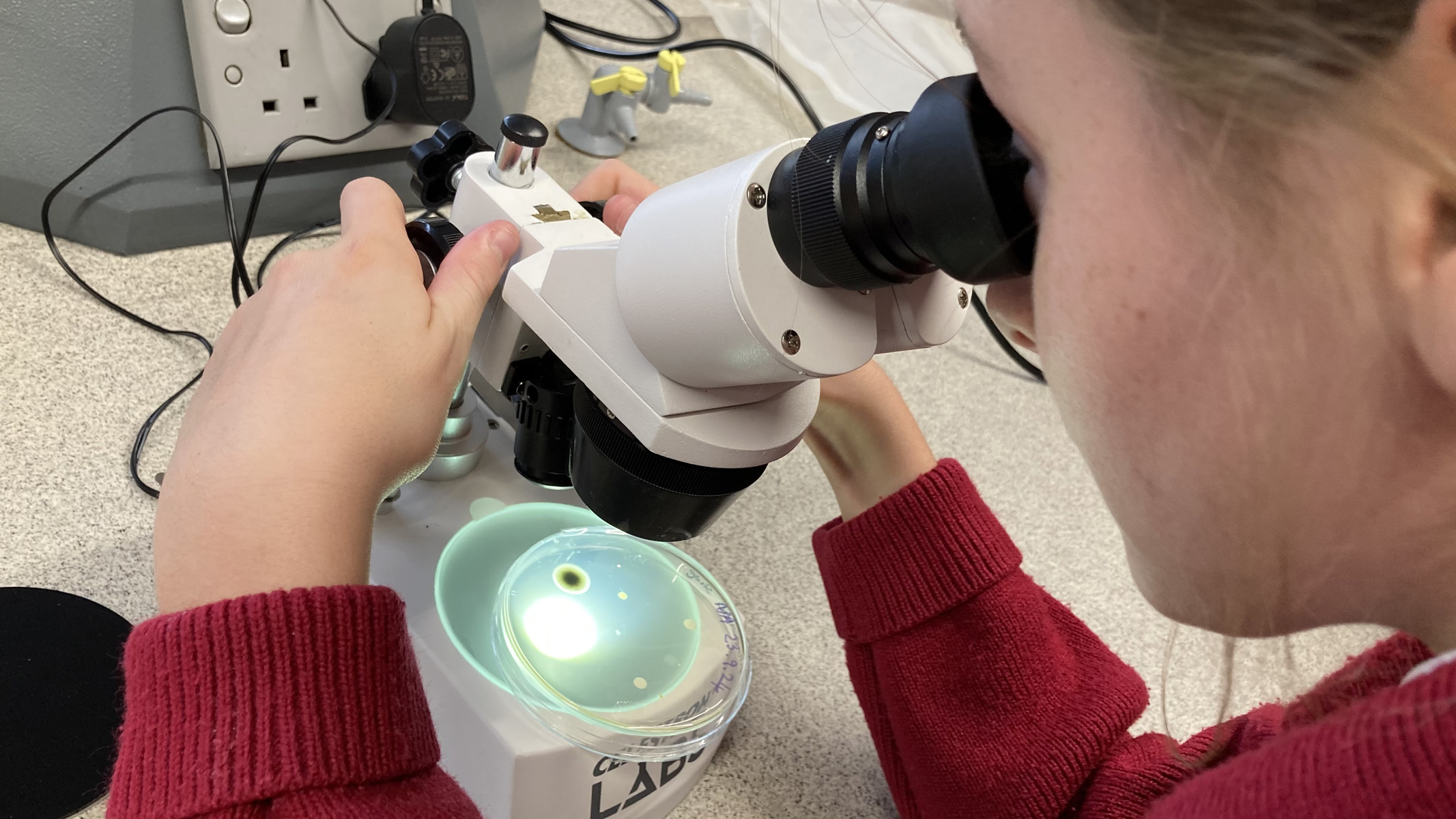
✅ You want to examine solid objects in 3D: The two separate images provided by the binocular tubes combine to create a three-dimensional image. The upper light aids this function.
✅ You want to view larger specimens like insects: The sizable gap between the stage and the objective lenses allows for viewing specimens up to 54mm.
The Celestron Labs S10-60 is a decent stereo microscope for students, and pupils felt professional while using it. This microscope has been sturdily built and should stand up to the eager handling of multiple users in a classroom setting while being easy enough to fathom and operate without guidance once they’ve gotten the hang of it. Thus, we would equally recommend the Celestron Labs S10-60 stereo microscope for use at home, at school or in the laboratory.
If this product is not for you
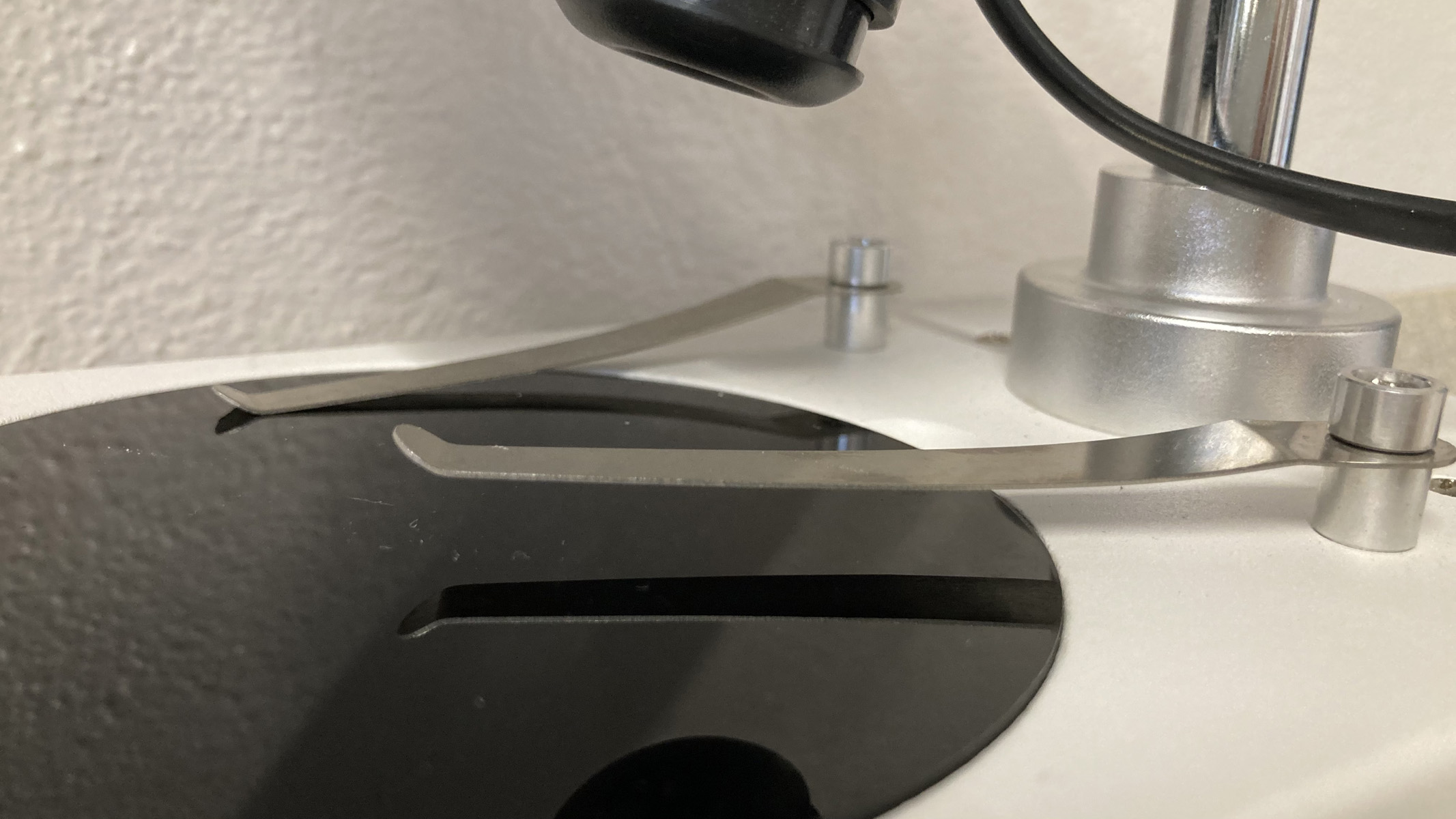
❌ You want to examine specimens at a magnification higher than 60X: This low magnification allows for a wider field of view but does not enable finer details to be picked out.
❌ You do not have good vision in both eyes: Stereo viewing relies on your seeing sharp images with both eyes. A monocular microscope would be the preferred choice if one eye is weaker.
For a stereo microscope with higher magnification, AmScope makes a zoom stereo microscope that is capable of 180X magnification, but with a higher price tag — the AmScope SM-1 Series Zoom trinocular stereo microscope.
If you would like a stereo microscope for field use, Celestron offers a cordless version for maximum portability — the Celestron Labs S10-30N
How we test
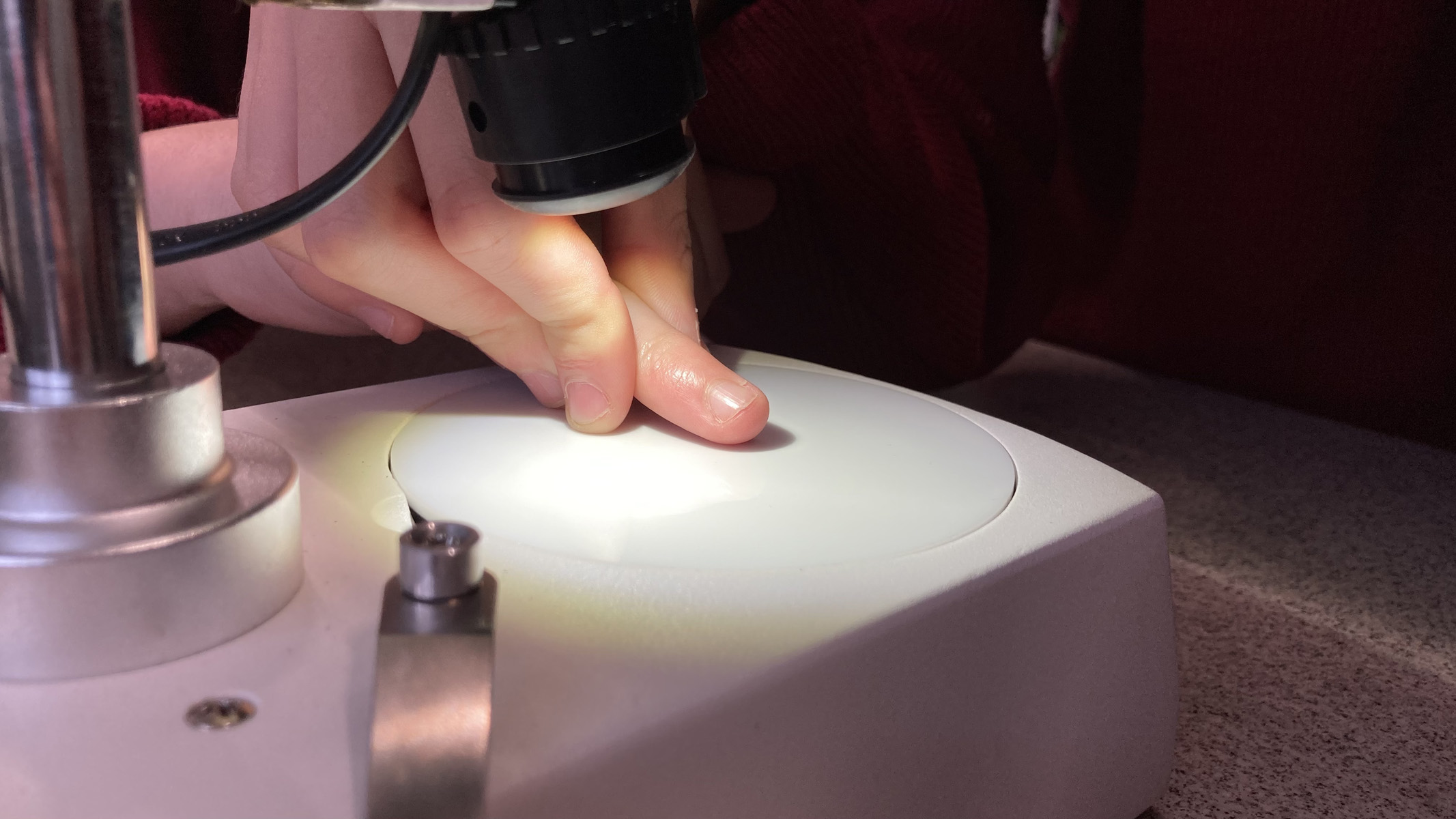
During a science lesson, we were investigating the rotting process and a pupil asked whether we could examine bread mold under a microscope. The dilemma was that, for health and safety reasons, we couldn’t remove it from its sealed bag to obtain a thin specimen and prepare a slide. Fortunately, the Celestron Labs S10-60 stereo microscope was nearby and allowed us to view the moldy bread within its package, in 3D and in color. An exciting, spontaneous response to an enquiring mind. Truly rewarding!
Later, pupils were given free rein with the Celestron Labs S10-60. During their habitats and classification topics, they examined a number of different organisms, mainly invertebrates. This was possible using the resin-mounted samples that came with this stereo microscope, as well as inorganic materials such as shells, rocks, bark and soil samples. In the school science club, we then spent time observing coins, crystals and our own fingerprints. Pupils even invented their own game, “Whose thumb?”, which was lots of fun.

Heather Barker is Head of Science at All Hallows Prep-School in Somerset, England. She has been educating young people between the ages of 5 and 19, as a teacher and private tutor, since 2012. Initially studying graphics with illustration to keep herself mentally challenged while bringing up her family, Heather re-trained by undertaking a Science degree with the Open University. Then, completed a Master’s degree in Developmental Biology and Biochemistry at The University of Bath in 2010. Afterward, Heather started work at the university as a Research Assistant, using histology and genetics to study the evolution of sticklebacks, before qualifying as a teacher in the Graduate training program.
